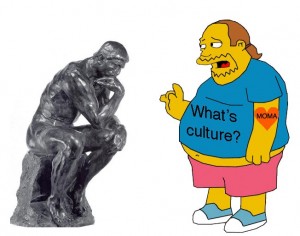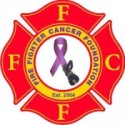By: Robert Avsec, Executive Fire Officer
Talk about a “hot button” topic in the fire service today. Everyone seems to be talking and writing about the need for changes in the fire  service culture for a variety of reasons including, but not limited to:
service culture for a variety of reasons including, but not limited to:
- Reducing firefighter deaths and injuries;
- Improving public perception and support;
- Recruiting, hiring and retaining a diverse workforce; and
- Reducing the incidents of negative behavior that reflect poorly on the profession, i.e., “firefighters and officers behaving badly.”
Definition: Culture consists of group norms of behavior and the underlying shared values that help keep those norms in place.
The topic of changing an organization’s culture is widely discussed in both the public and private sectors in the United States and around the world. Just read any news account of something that’s gone wrong in an organization, e.g., the recent revelations of poor service being provided to our nation’s veterans by the Veterans Administration, and the conversation is dominated by calls for the culture to change.
But changing the fire service culture is not as easy as changing the type of hose that a department carries on its fire apparatus. That’s because making changes to the culture—that mix of rituals, values, and traditions that defines a group—is tricky business and frequently messy. The current culture persists because it’s one of the main ingredients in the glue that holds the organization together. Culture exists in the “space” between people, not just in any one individual or small group of individuals.
“Studies have recently shown that cultures can be almost unimaginably persistent. In Germany, for instance, towns in which Jews were blamed for the Black Plague still exhibited more anti-Semitism than other towns 600 years later.”
So How Can We Change Culture?
 According to researchers, there are techniques that organizations can use to successfully change culture, but they’re not what you might think. If you’re looking to make substantial and lasting change in your organization’s culture, it’s going to require finesse, subtlety, and patience. You’re also going to have to put aside a bit of your optimism about human nature.
According to researchers, there are techniques that organizations can use to successfully change culture, but they’re not what you might think. If you’re looking to make substantial and lasting change in your organization’s culture, it’s going to require finesse, subtlety, and patience. You’re also going to have to put aside a bit of your optimism about human nature.
Those same researchers have discovered that if a leader wants to make meaningful and lasting cultural changes in an organization—to really change how the people in an organization think and behave—it’s not going to be by changing what’s inside of people or appealing to their inner sense of virtue (what’s right). Instead, the leader just has to convince them that everybody else is doing it.
“The inner conformist is stronger than the inner activist,” said Michael Morris, a psychologist at Columbia University who studies the role of culture in decision-making.
Most of us think of progress or improvement as the spread of enlightened thinking and the expansion of morality. We believe that in order to change the culture of a fire department we can do it by appealing to the sense of right and wrong in our people, i.e., “awaken their better angels.”
But if we really want to make meaningful and lasting improvements in the fire service culture, we may gain more ground by stopping our efforts at tapping into people’s desire to be good or virtuous. Rather, we should take advantage of something less lofty, and quite frankly harder to admire: an individual’s powerful drive to “be normal.”
The idea that we’re often mistaken about our compatriots’ beliefs and behavior has been deployed in anti-binge-drinking campaigns on college campuses, which aim to reduce the pressure students feel to drink by showing them that their peers don’t drink nearly as much as they assume.
A poster campaign at the University of North Carolina Chapel Hill presented students with hard data about their classmates: “Whether it’s Thursday, Friday, or Saturday night, 2 out of 3 UNC students return home with a .00 blood alcohol concentration.”
The program worked: After five years, people at the college were drinking less.
So we change people’s behaviors not by trying to change the individual’s behavior, but rather by having a positive influence on their perceptions about the behavior of others. It’s a self-reinforcing process.
 Take smoking in the United States as an example. Up until the mid-1960’s smoking was a normal, i.e., a typical activity at home, work and in public. Beginning with the U.S. Surgeon General’s 1964 Report on Smoking and Health, public attitudes toward smoking began to shift: it became an increasingly atypical and socially unacceptable activity. Most people who quit smoking did so, not because quitting was the “right thing”, but because smoking had become the “wrong thing”.
Take smoking in the United States as an example. Up until the mid-1960’s smoking was a normal, i.e., a typical activity at home, work and in public. Beginning with the U.S. Surgeon General’s 1964 Report on Smoking and Health, public attitudes toward smoking began to shift: it became an increasingly atypical and socially unacceptable activity. Most people who quit smoking did so, not because quitting was the “right thing”, but because smoking had become the “wrong thing”.
Likewise, fewer people took up smoking, or smoked in public, as time went on and more people believed that smoking was “not the social norm”. The less socially acceptable smoking became provided further evidence that it (smoking) had become socially unacceptable. The most challenging part was “kicking off the cycle”; convincing enough people that deviating from existing norms will not leave them shunned by the rest of society.
Today, we see a similarly rapid shift in people’s perceptions in the United States regarding same-sex marriage and equal protection under the law for non-heterosexuals. Younger Americans, who’ve grown up in an environment where gay people were more likely to be open about their sexuality and depicted as regular members of society in movies and on TV—and who may themselves been raised in a household with same-sex parents—are significantly more accepting of the idea than those who grew up with different norms.
Cultural Change in the Fire Service
Heretofore, our efforts at making changes to the fire service culture have focused on training and education and policies that have attempted
to appeal to the individual’s sense of virtue (what’s right). How else can we explain:
- Firefighters not using their SCBA and breathing smoke despite policies and training to the contrary and the growing body of information on the health dangers of breathing smoke.
- Firefighters not wearing their seatbelts when responding on fire apparatus despite efforts like the National Firefighter Seatbelt Pledge and the efforts of the National Fallen Firefighters Foundation, the IAFC, IAFF and other leading fire service organizations.
- Firefighters and officers engaging in sexually inappropriate behavior in the fire station, including sexual assault and rape, toward their female team members despite policies, laws, and training to eliminate such behavior and criminal acts.
Our challenge, then, is how we make these scenarios— and the hundreds of others that make up our fire service culture— atypical, i.e., the “wrong thing.”
How do we convince enough firefighters that deviating from existing norms will not leave them shunned by the rest of their colleagues and peers?
Related Articles
What Is Organizational Culture? And Why Should We Care?
The Key to Changing Organizational Culture
 Fire & EMS Leader Pro The job of old firefighters is to teach young firefighters how to become old firefighters!
Fire & EMS Leader Pro The job of old firefighters is to teach young firefighters how to become old firefighters!
